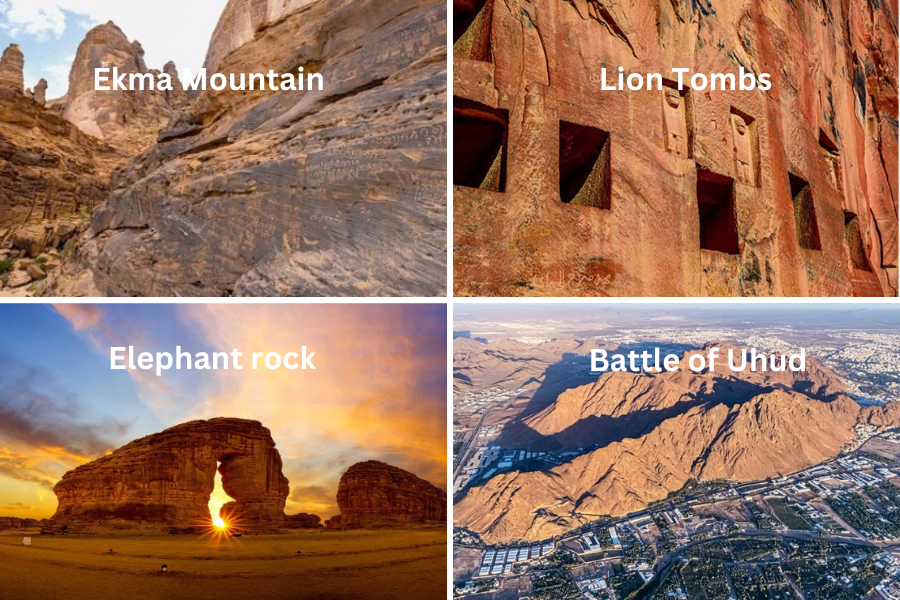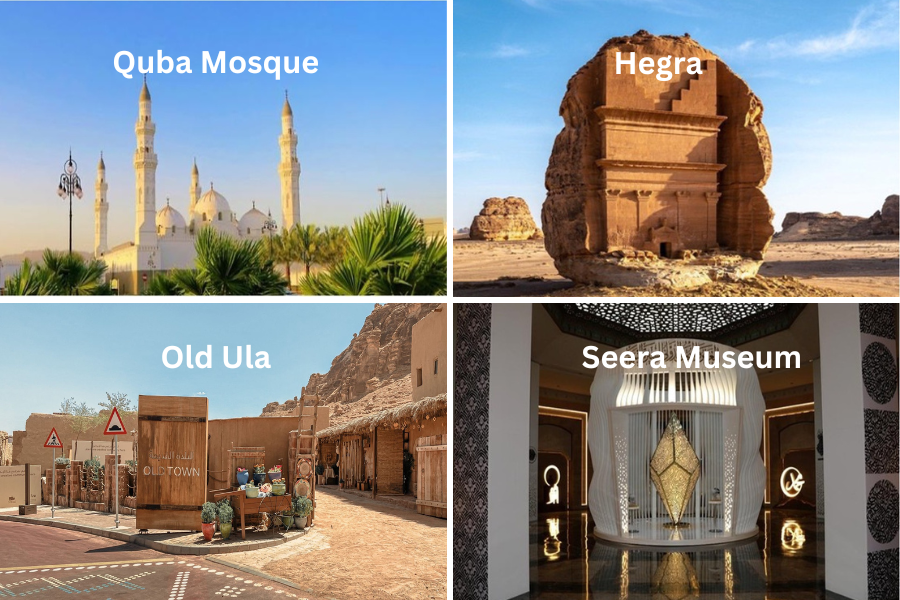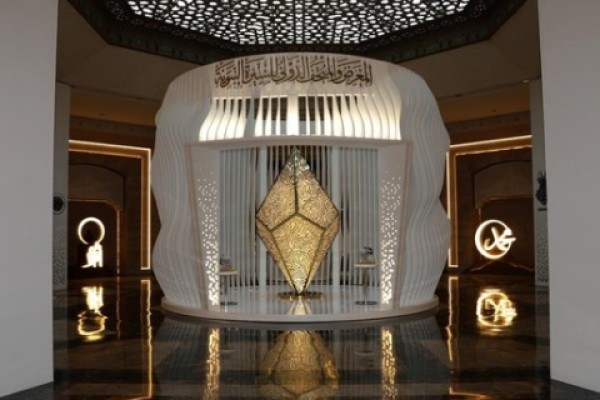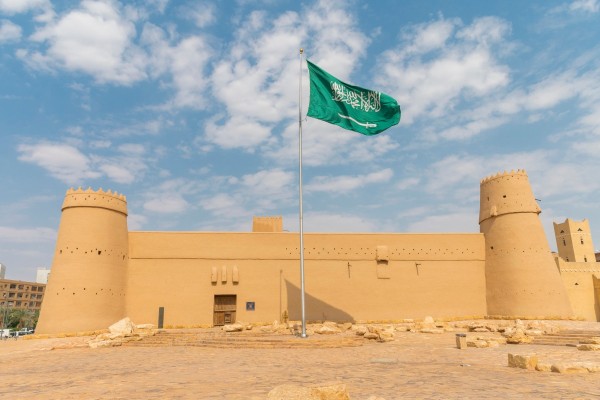5 Days Umrah+
Makkah, Madinah and Ula
| 1 Days | Max People : 20 |
| Min Age : 12+ |
Detail
places to visit
Seera Museum
The Seera Museum in Al Madinah typically is a historical museum dedicated to showcasing the rich past of Medina, the second holiest city in Islam. It houses a collection of artifacts, models, and exhibits that illustrate the city's evolution from its pre-Islamic origins to its emergence as a significant center of Islamic civilization.
The Battle of Uhud
The Battle of Uhud is a battle that took place between Muslims and the Quraish tribe in the third year of migration. The Muslim army was led by the Prophet Muhammad, and the Quraish tribe was led by Abu Sufyan bin Harb. The Battle of Uhud is the second major battle undertaken by Muslims. It occurred on the mount of Uhud.
Quba Mosque
Quba Mosque The Quba Mosque is the first mosque built in Islam and the first mosque constructed in the city of Medina. In terms of precedence, the Kaaba in Mecca is considered the first house established for people, while the Quba Mosque is recognized as the first mosque built by Muslims after the Prophet Muhammad's migration from Mecca to Medina. Located south of Medina, the mosque was built by Prophet Muhammad upon his migration to the city. Muslims throughout past centuries have shown interest in renovating and expanding the mosque. It was renovated by Uthman ibn Affan and later by Umar ibn Abdul Aziz during the reign of Walid ibn Abdul Malik. This care and development continued under subsequent caliphs, including Sultan Qaitbay and the Ottoman Sultans Mahmud II and his son Sultan Abdul Majid.
Elephant rock
Elephant rock The "trunk" and "body" of this monolithic red sandstone beast were shaped by natural forces millions of years of wind and water erosion. The beauty of the unrefined structure is enhanced by a landscape of golden sands.
Lion Tombs Near Dadan
Lion Tombs Near Dadan Dadan was the capital city of the Lihyan and Dadan kingdoms. These civilizations flourished 2000 years ago. The Lihyan kingdom was among the biggest of its time, and it was spread from Madinah in the south to Aqaba in the north (Jordan). dadan was an ancient city currently located near Al-Ula. Dadan is widely known for its stunning tombs carved into red rocks. Lion tombs of Dadan are the most famous among all other tombs present in the region. These beautifully carved structures are 50 meters high. Historically the city had considerable importance in terms of trade as it was located on a major trading route. It acted as a crucial link between the southern region of the Arabian Peninsula and several Persia, Egypt, and Mesopotamia empires. Being at the center of a significant trading route, the city was influenced by cultures of other lands.
Old Ula
Old Ula dating back to the 12th century, the heritage site is best known for its mud- brick buildings and being an age-old settlement on the pilgrimage route from Damascus to Makkah. Al Ula Old Town was inhabited from the 12th century until the 1980s, when its last residents left the ancient village for more modern locales. With nearly 900 houses, 400 shops and five town squares, the Old Town is once again welcoming travelers. It contains Masjid Al-Izam, the restored Friday Mosque believed to have been visited by the Prophet Mohammed. Travelers can also see the town’s tantora, or sundial, which served as the main way residents tracked the change of seasons.
Ekma Mountain
Ekma Mountain a towering mountain, whose color tends towards red, is located about three kilometers northwest of the city of Al-Ula in Saudi Arabia. It is considered an open library, containing hundreds of inscriptions and writings on its slopes and rock surfaces, primarily dating back to the Dadanian and Lihyanian periods. It narrates the history of the region and life therein during various historical epochs, serving as a documented record of the flourishing Lihyanian civilization in the Arabian Peninsula and the East during a significant period of history
Hegra
Hegra The Hegra Archaeological Site is the first World Heritage property to be inscribed in Saudi Arabia. It is the largest conserved site of the civilization of the Nabataeans south of Petrain Jordan. It features well-preserved monumental tombs with decorated facades dating from the 1st century BC to the 1st century AD. The site also features some 50 inscriptions of the pre-Nabataean period and some cave drawings. Al-Hijr bears a unique testimony to Nabataean civilization. With its 111 monumental tomb 94 of which are decorated and water wells, the site is an outstanding example of the Nabataeans’ architectural accomplishment and hydraulic expertis
Price Includes
- All Fees and Taxes
- Private transportation
- Accommodation
- Hospitality & Snacks
- Tour guide (English)
- pick up airport and drop of
- Food and beverage
Price excludes
- International Flights Tickets
- Visa
Itinerary
Day 1: arrival Jeddah go to Makkah
- On arrival at Jeddah International Airport. Once complete the immigration and customs formalities, meet your Hamza Camel Tours representative in the arrival's hal
- On arrival at Jeddah International drive to the Miqat and prepare for Umra
- lunch at locul resturant
- go to the Holy Mosque to perform Umrah
- dinner at Al Baik restaurant
- back to the hotel for overnight sleep
Day 2: Makkah
- breakfast at the hotel
- pray Fajr in the Holy Mosque and meditate until Zuhr prayer
- back to the hotel for lunch
- visit clock tower museum
- pass by Zamzam distribution factory
- visit Hera culture center (to be introduced to Al Nour Mountain and Hera Cave)
- dinner at Kroteeh restaurant
- back to hotel for overnight sleep
Day 3: from Makkah to Madinah
- breakfast at the hotel
- transfer to Train Station and ride to Madinah
- move from Madinah train station and have lunch at Qoba street
(Al Tabbakhen) restaurant
- drive to the Holy Mosque
- visit Quba Mosque and pass by al Ghamarah Mosque, Al
- Jumaa Mosque, ghars water well and Salman al Farsi water well.
- visit Uhod Mountain
- dineer at indosain restaurant
- go to the hotel for overnight sleep
Day 4: from Madinah to Ula
- breakfast at the hotel
- start driving towards Al Ula
- lunch at a local restaurant in Khaibar
- transfer to the Hegra site and enjoy the Nabataean Civilization
- visit Old Ula and dinner at Al Nakheel resturant
- go to Sahara resort for overnight sleep
Day 5: Al Ula back to home
- breakfast in the resort
- drive to Dadan Civilization site and Ekma Mountain
- hike for 70 minutes from Historical Ula to Ekma mountain site enjoying
- passing between ancient Palm tree farms
- lunch at Kainona resturant
- explore Thamodian inscriptions in the wild mountains
- drive to Elephant Mountain for relaxing and meditation
- drive to airport to flay to Jeddah back to home
 العربية
العربية



.jpg)

 (1).jpg)